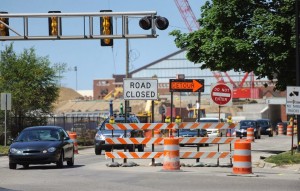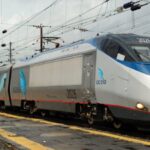It’s Time to Level the Playing Field for Both Highways and Rail.
The following arrived in an email from past-chairmen of the board of the National Association of Railroad Passengers, George Chilson. It’s a clear, concise summary of the fundamental flaw in the way public transportation is funded in the U.S. and it’s well worth sharing.
* * *
Road projects are never subjected to any sort of financial analysis. Why? It’s simple: because they don’t generate any revenue.
With the exception of a few toll facilities, roads are a free service provided by government at taxpayer expense. When government builds a road, it signs on to paying its operating costs as well. The decision to dedicate (a/k/a “earmark”) an enormous and continuing stream of tax revenue for road construction has made it possible for road projects to proceed unquestioned on the basis of their assumed ability to improve public mobility.
With the exception of a few toll facilities, roads are a free service provided by government at taxpayer expense. When government builds a road, it signs on to paying its operating costs as well. The decision to dedicate (a/k/a “earmark”) an enormous and continuing stream of tax revenue for road construction has made it possible for road projects to proceed unquestioned on the basis of their assumed ability to improve public mobility.
Today, a dollar spent on rail will provide more capacity and potentially higher quality mobility than the same dollar spent on roads. So why do we buy into this double standard that hobbles investment in rail? Advocates should set a single goal: change the public spending policies Congress and states adopted nearly a century ago in order to bring them in line with current needs and public preferences. That’s rail (in all its forms from streetcars to high speed trains), not roads.
If roads had to pass the financial tests and scrutiny that seem to be accepted without question for rail, government would build far fewer roads. Why do we accept this constraint on rail? Public investment to improve and expand rail will deliver better jobs, greater prosperity and a higher quality of life for the American people. That is the overarching message that rail advocates should be delivering.
We need to be creating new and compelling ways to deliver this message, new strategies for getting the message out and then taking action to convince public opinion leaders and decision makers that trains will put the nation on track for better jobs, greater prosperity and a higher quality of life.




